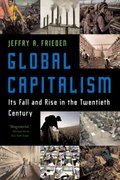Answered step by step
Verified Expert Solution
Question
1 Approved Answer
Any help would be appreciated 1. Explain which participants (e.g. consumers, producers, government, those facing an externality) in a market may prefer a quantity constraint
Any help would be appreciated

Step by Step Solution
There are 3 Steps involved in it
Step: 1

Get Instant Access to Expert-Tailored Solutions
See step-by-step solutions with expert insights and AI powered tools for academic success
Step: 2

Step: 3

Ace Your Homework with AI
Get the answers you need in no time with our AI-driven, step-by-step assistance
Get Started


